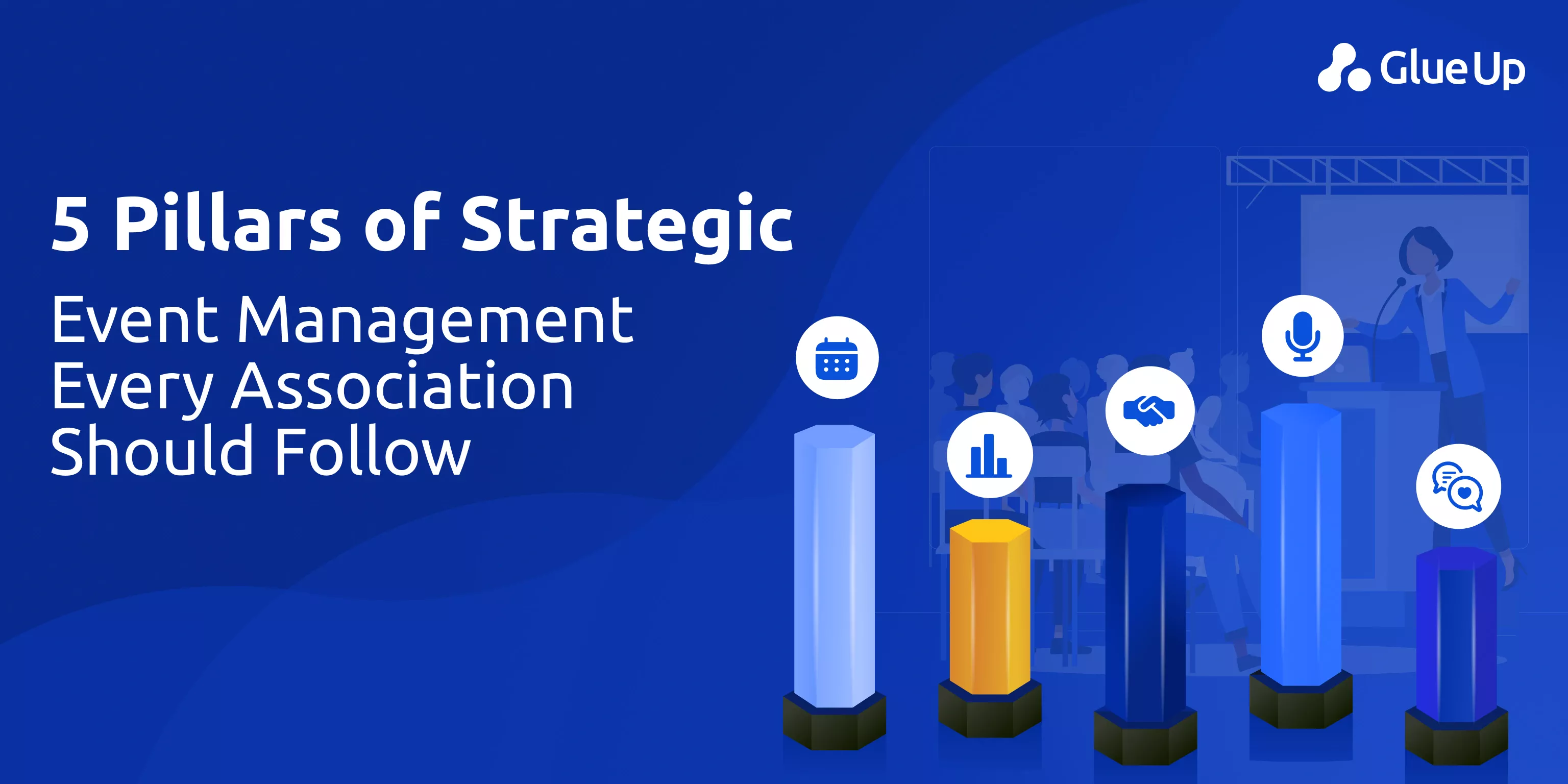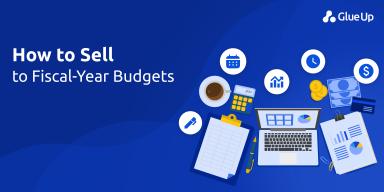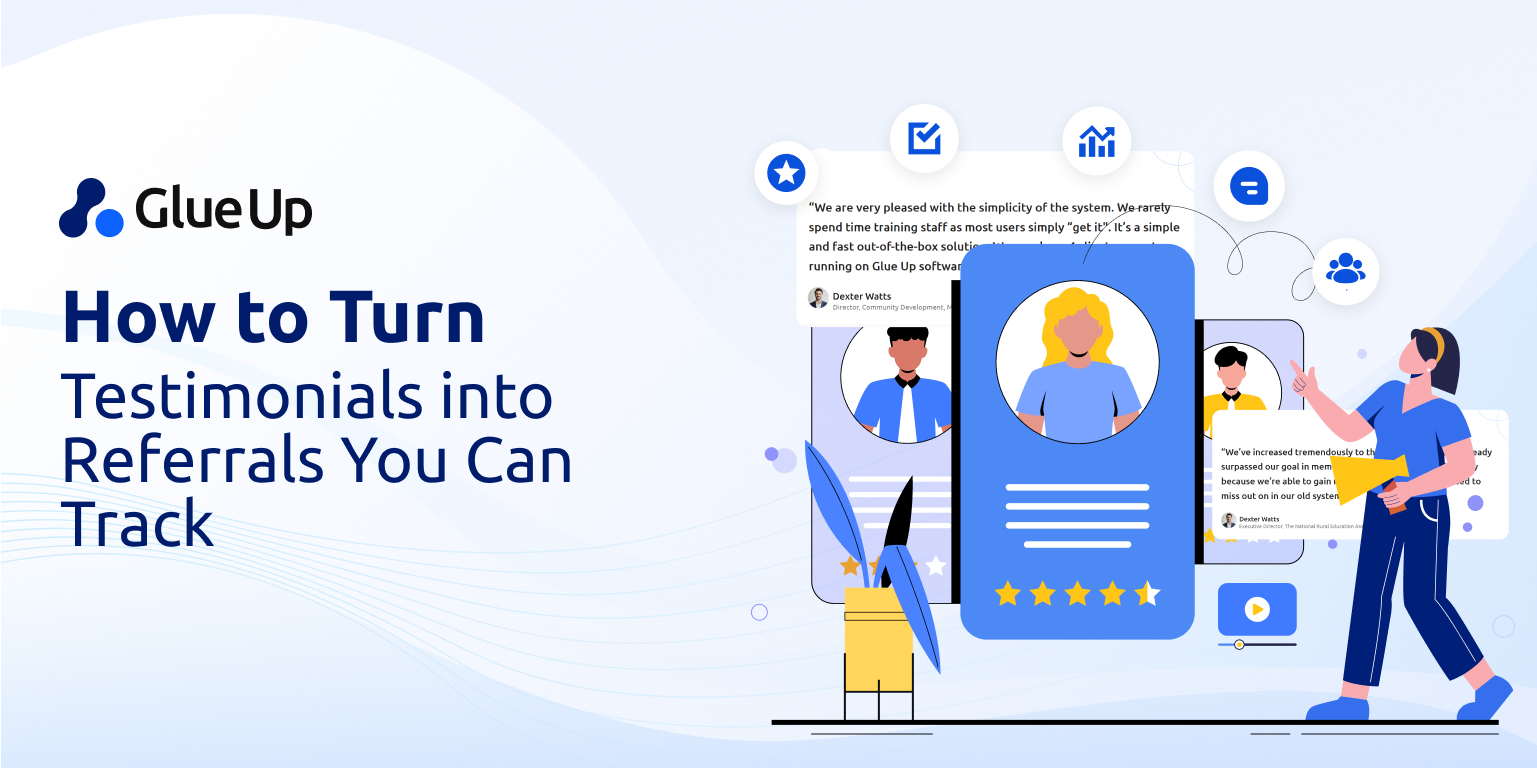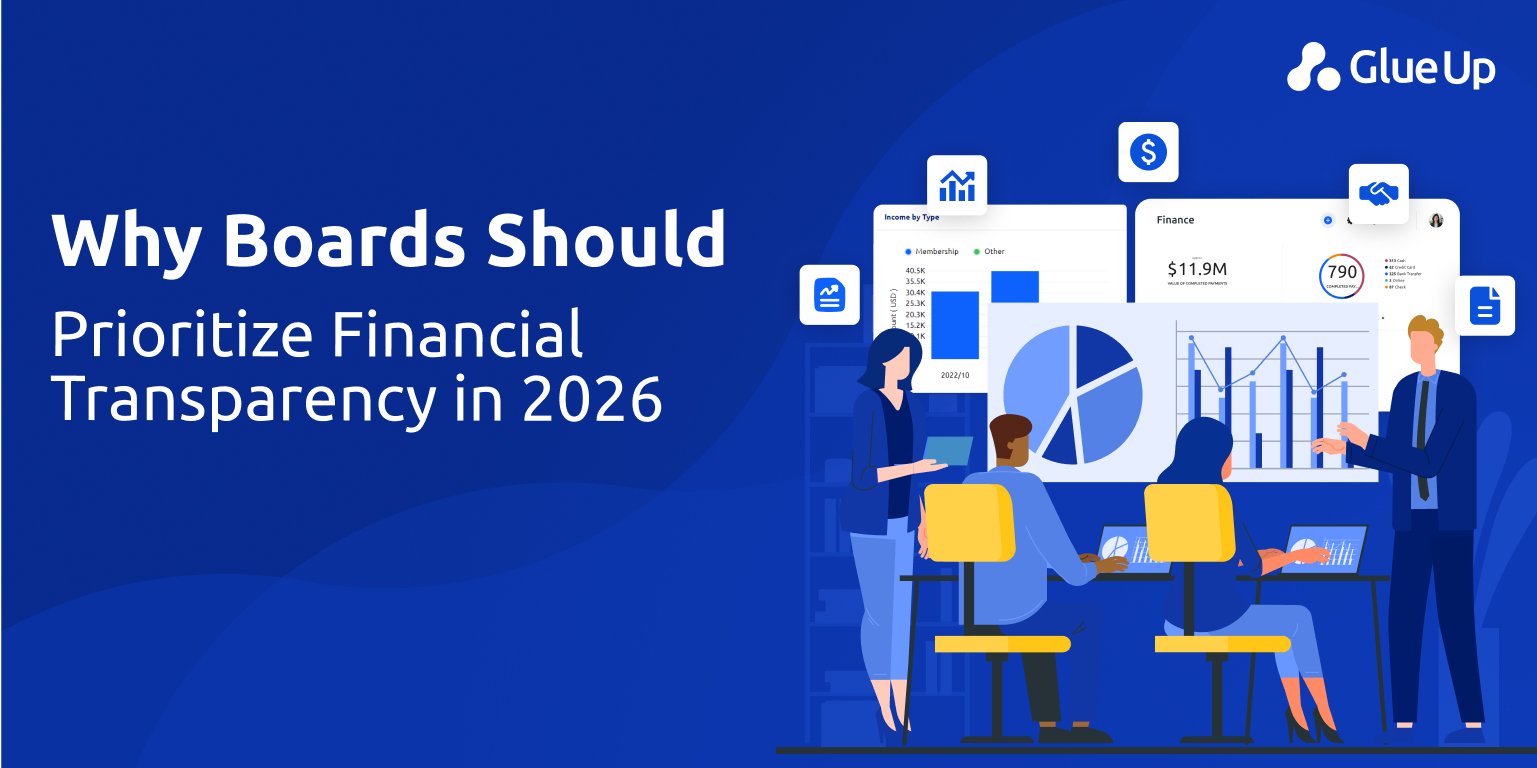
Strategic event management is no longer optional for associations competing in a crowded marketplace. Executives know events absorb a significant share of budgets and staff resources, yet too many still treat them as one-off projects. The result is inconsistent outcomes, limited visibility into ROI, and programs that struggle to align with organizational priorities.
However, a structured approach, backed by powerful association management software (AMS) like Glue Up, reframes events as strategic assets. It anchors planning in measurable objectives, integrates sponsorship and registration workflows with membership data, and ensures engagement metrics feed directly into renewal and retention strategies.
In this post, we will outline the five pillars of strategic event management you should follow and examine how association CRM with integrated member engagement tools translates them into sustainable growth.
Glue Up partners with more than 1,500 associations worldwide, so we understand the pressures on your time and resources. For a faster overview of our platform, watch the video below and book a demo with our experts today.
Key Takeaways
- Strategic event management requires a disciplined framework that links events to organizational goals.
- Defining objectives and aligning roles early ensures clarity and accountability.
- Sponsorship pipelines need to be structured, tracked, and integrated into the annual calendar.
- Attendee engagement is strongest when supported by technology like communities, surveys, and mobile apps.
- Measurement is non-negotiable: use integrated reporting to connect events with membership renewal, sponsorship ROI, and long-term growth.
Why Strategic Event Management Matters in Associations
Events still absorb a disproportionate share of your association’s budget and senior leadership attention. Yet too often they live in silos, run separately from membership, sponsorship, and renewal workflows. The result: unpredictable returns, inconsistent metrics, and internal tension over ROI.
Critically, strategic event management flips that paradigm. It insists on coherence, where every detail, from speaker selection to sponsorship packaging, contributes to predefined objectives. Associations that adopt this rigor see lasting gains. According to Lyyti, organizations that proactively plan and manage events report clear improvements in event outcomes, operational alignment, and return on investment.
Meanwhile, the broader events industry confirms the trend. In a 2025 survey by ElectroIQ, 72.5% of organizers said their event management software had a substantial impact on positive outcomes
So, if you’re hosting association events in 2025 and beyond, technology isn’t optional; it’s table stakes.
To summarize, thoughtful execution of strategic event management requires three core shifts:
- From Ad Hoc to Objective-Driven: Instead of planning each event in isolation, leaders must begin with outcomes: retention uplift, revenue per attendee, sponsor renewals, or engagement metrics.
- From Fragmented Systems to Integrated Infrastructure: Pulling together registration, sponsorship, attendee feedback, and post-event analytics into one architecture ensures your data is reliable and actionable.
- From One-Off Wins to Portfolio Optimization: Events are not standalone P&Ls. They belong to a portfolio. Associations must balance flagship conferences, regional meetings, and niche webinars to maximize impact without stretching resources.
With these shifts, events cease to be cost centers. They become predictable engines of value, triggers in your member lifecycle, catalysts for sponsor loyalty, and measurable levers you can justify to your board.
The Five Pillars of Strategic Event Management
As we move forward, we’ll outline the five pillars of Strategic Event Management and show how our AI-powered association CRM with event tools supports your member retention strategies, membership renewal processes, and engagement metrics.
These pillars matter because they provide structure to what can otherwise feel fragmented. They ensure every event, from large-scale conferences to smaller member workshops, contributes to long-term objectives rather than short-term wins. Clear principles guide how you set goals, allocate resources, and measure outcomes.
Let’s look at the five pillars every association executive should follow to elevate event performance:
Pillar 1: Define Clear Objectives And Event Outcomes
The first step in strategic event management is setting unambiguous objectives. Without clarity, you risk running programs that consume resources but deliver little measurable value. So, as an executive, you need to begin with outcomes, not logistics, and build every decision around those outcomes.
Things You Need Up Front
- Objective statements: One to three outcomes such as “increase qualified prospect pipeline for the certification track” or “expand chapter leader engagement for next-year committees.”
- Measurement Model: Event success metrics mapped to each objective, for example, attendance metrics, session engagement, lead capture rate, sponsor meetings booked, and post-event reports delivered to the board.
- Scope Levers: Constraints and choices that shape outcomes, including budget guardrails, target audience profiles, portfolio fit, and capacity management for rooms and formats.
- Planning frame: use a simple 5 Ps lens to keep objectives tied to execution: Person, Place, Product, Price, Promotion. Treat “Purpose” as the zeroeth step.
How To Do It
- Write the Outcome First. Specify what must change because of the event: renewals influenced, committee signups, sponsorship opportunities advanced, or member education credits issued. Tie each to a measurable indicator.
- Design Signals You Can Capture. Decide what data proves progress: role and segment mix at registration, session interactions, meeting requests, expo scans, survey items tied to intent, and follow-up meeting acceptance. Build the capture plan now, not after launch.
- Back Into the Plan. With outcomes set, align agenda, speakers, and formats. Set promotional strategy, including email campaigns, social media outreach, and early bird offers, to reach the exact audience your objectives require.
Example In Practice
A mid-year policy summit aims to move advocacy contacts from awareness to active participation and to create five new sponsorship conversations for the annual meeting.
- Objectives: 1) Secure 30 committee interest forms from targeted segments. 2) Generate five sponsor meetings scheduled within 14 days.
- Plan Implications: Sessions emphasize policy briefings and peer roundtables. Promotion prioritizes invite-only outreach to legislative liaisons and corporate affairs leaders. On-site workflows include hosted sponsor meetups and facilitated introductions. Post-event follow-up triggers targeted nurture for committee prospects and separate sponsor next steps.
Instrumentation And KPIs
Track a short list that leadership respects and staff can collect reliably:
- Acquisition: Registration source mix, role seniority, geographic spread.
- Engagement: Session dwell time, questions submitted, and networking meetings scheduled.
- Commercial: Sponsor meetings requested, packages discussed, proposals sent.
- Learning and Influence: Survey alignment with policy priorities, intent to participate in committees.
- Operational: No-show rate, on-time starts, issue resolution SLAs. Dashboard these indicators and publish a one-page post-event report within one week. Use analytics dashboards that roll up to the portfolio to avoid one-off spreadsheets.
Workflow In Our Association Management Software (AMS)
With Glue Up, you can set up events with objectives embedded into forms, workflows, and reports:
- Registration Design: Create custom registration forms in event blueprints and pull fields from the CRM to capture attendee role, function, and interests.
- Sponsor Management: Add sponsor categories, search CRM records, or enter details manually; track sponsorship value and include it in event Profit & Loss reports.
- Lead Capture: Use Event Room for attendee networking and digital business cards, and design badges for on-site scanning to log participation.
- Promotion Orchestration: Segment specific audiences with Smart Lists and automate email campaigns; customize confirmation and reminder emails within the Campaigns module.
- Post-Event Follow-Up: Export attendance, registration, and sponsorship data into Profit & Loss reports for boards and executive evaluation.
Quick Checklist
- Outcomes written in plain language and approved.
- Metrics defined with data sources and owners.
- Capture points embedded in registration, sessions, and sponsor workflows.
- Promotion plan aligned to the audience that drives the objectives.
- Post-event report template ready before launch.
Pillar 2: Align People, Roles, And Resources Effectively
The second pillar of association event management is about organization and allocation. Even the most carefully defined objectives fail without the right people, roles, and resources to deliver them. For association leaders, this means coordinating staff, volunteers, vendors, and board stakeholders in a way that eliminates duplication and builds accountability at every stage of the event lifecycle.
Things You Need Up Front
- Role Definitions: Document responsibilities for executives, staff, committees, vendors, and volunteers to eliminate overlap.
- Governance Model: Establish decision-making authority for budgets, sponsorship agreements, and program changes.
- Resource Allocation: Assign human and financial resources early to avoid last-minute gaps in staffing or funding.
- Communication Plan: Define cadence for planning meetings, progress updates, and escalation paths for issues.
How To Do It
- Map the Stakeholder Landscape: Identify all individuals and groups that have influence or accountability during the event. This includes internal staff, volunteer committees, contracted vendors, and board members.
- Assign Clear Owners: Ensure each objective from Pillar 1 has a directly accountable person or team. Create visibility by mapping objectives to roles in your association event management platform.
- Integrate Resources Into Systems: Upload contracts, vendor agreements, and volunteer schedules into your association CRM or event management software so leaders have a single view of commitments.
- Establish Reporting Lines: Build clear escalation routes. For example, venue changes route through operations leads, while sponsor contract issues escalate to the CFO or Sponsorship Director.
Example In Practice
A national conference involves 1,000 attendees, 30 sponsors, and multiple breakout tracks.
- Roles: Operations staff handle venue logistics, while the Sponsorship Manager manages deliverables for sponsor booths. Volunteers coordinate attendee registration, and a board liaison provides governance oversight.
- Resource Allocation: Budget allocations are set for technology, catering, and marketing. Staff time is split by week with benchmarks tied to major milestones.
- Communication: Weekly stand-ups track progress across teams, while automated reminders from the AMS keep deliverables visible in workflows.
Instrumentation And KPIs
- Task Completion: Percentage of deliverables completed by milestone date.
- Ownership Clarity: Number of tasks with a named responsible owner in the project tracker.
- Resource Efficiency: Budget variance, volunteer hours logged, and vendor performance against contracts.
- Escalation Resolution: Average time to resolve escalated issues.
Workflow In Our Association Membership Platform & Supporting Tools
With Glue Up, you can align people, roles, and resources in a structured way:
- Task Management: Assign and track deliverables within the Membership Workflow Manager, giving every team member clear ownership. You can also opt for our project management software, offering features like task to-do lists and Kanban boards.
- Document Repository: Store vendor contracts, volunteer schedules, and agreements centrally so information is accessible to all stakeholders.
- Volunteer Coordination: Use member engagement tools to recruit, schedule, and track volunteer contributions during events.
- Automated Notifications: Configure system emails and reminders to alert staff, sponsors, or vendors when deadlines or approvals are due.
Quick Checklist
- Roles defined and communicated in advance.
- Governance model approved by leadership.
- Resources allocated and logged in systems.
- Escalation paths documented.
- Communication cadence established.
Pillar 3: Build Sponsorship Pipelines And Revenue Streams
The third pillar of strategic event management focuses on monetization. Associations cannot afford to treat sponsorship as a last-minute add-on. When sponsorship pipelines are structured and integrated into association event management, they deliver predictable revenue, stronger partner relationships, and measurable value that extends beyond a single program.
Things You Need Up Front
- Sponsor Prospect List: A segmented list of partners by industry, engagement history, and revenue potential.
- Tiered Packages: Defined levels such as Gold, Silver, and Bronze with distinct benefits.
- Pricing Models: Structured ticket revenue, upsells, and bundled sponsor opportunities.
- Tracking System: A centralized record of contracts, deliverables, and sponsor interactions.
- Merchandise Opportunities: Branded giveaways, sponsored tote bags, lanyards, or merchandise booths.
- Digital Assets: Sponsored event apps, livestream branding, or logo placement in digital campaigns.
- Exhibition Space: Booths, demo areas, or product showcase zones tied to capacity management planning.
- Hospitality Options: Sponsored luncheons, coffee breaks, or receptions.
- Thought Leadership Slots: Sponsored keynotes, panels, or breakout sessions.
- Content Integration: Contributions to white papers, case studies, or post-event reports.
- Networking Access: Reserved meeting spaces, hosted dinners, or curated introductions.
- Media Visibility: Inclusion in press releases, social media campaigns, or association newsletters.
- Optional (if relevant): Sponsored charging stations, venue signage, transportation shuttles, sustainability programs.
How To Do It
- Map Sponsor Objectives: Understand whether sponsors want visibility, lead generation, policy influence, or thought leadership.
- Design Packages That Deliver: Align benefits to outcomes—sponsored sessions, digital promotion, or exclusive networking opportunities.
- Integrate Opportunities Across the Portfolio: Spread sponsorship across the annual calendar so partners see value beyond a single flagship event.
- Monitor and Report: Track whether benefits were delivered and whether sponsors achieved their goals, linking outcomes to event ROI.
Example In Practice
An annual trade association conference sets a target to increase sponsor revenue by 20%.
- Packages: Gold sponsors host plenary sessions, Silver sponsors secure branding across digital channels, Bronze sponsors gain access to targeted networking.
- Execution: Contracts specify benefits, while fulfillment is tracked in the AMS.
- Follow-Up: Post-event reporting highlights benefits delivered and opportunities for renewal.
Instrumentation And KPIs
- Revenue Metrics: Total sponsor revenue, revenue per category, and upsell performance.
- Retention Metrics: Percentage of sponsors renewing for subsequent events.
- Engagement Metrics: Sponsor-led sessions, meetings scheduled, or digital impressions.
- Delivery Metrics: Percentage of contracted benefits fulfilled on time.
Workflow In Glue Up’s All-In-One Membership Management Software
With Glue Up, sponsorship pipelines and revenue streams are managed directly inside the event workflow:
- Sponsor Categories: Create and manage sponsor levels such as Gold, Silver, or Bronze with descriptions and benefits.
- CRM Integration: Search existing sponsor companies in the CRM or add new ones to maintain consistent records.
- Value Tracking: Record sponsorship amounts and automatically feed them into Profit & Loss reporting for each event.
- Visibility Settings: Control whether sponsor information appears on the event website, program materials, or remains internal.
Quick Checklist
- Current sponsor list segmented by industry and revenue potential.
- Tiered sponsorship packages created with clear benefits.
- Pricing models include upsells and bundled opportunities.
- Merchandise and digital sponsorship assets defined.
- Exhibition and hospitality options allocated.
- Tracking system in place for contracts and delivery.
- Renewal strategy built into the sponsorship pipeline.
- Benefits tied to attendee experience design and reported as part of overall event ROI.
Pillar 4: Enhance Attendee Engagement Through Technology
The fourth pillar of strategic event management focuses on engagement. For associations, engagement isn’t about entertainment. It’s about creating meaningful touchpoints that drive retention, renewal, and long-term value. Whether you’re running in-person, virtual, or hybrid events, technology is now the backbone of how attendees connect, learn, and contribute.
Things You Need Up Front
- Engagement Plan: Define how you’ll engage attendees before, during, and after the event.
- Networking Features: Tools for matchmaking, contact sharing, or curated introductions.
- Feedback Channels: Surveys or polls to capture real-time input.
- Hybrid Support: Technology that enables both in-person and online participation.
- Community Access: Platforms for ongoing conversations between attendees.
- Interactive Sessions: Live Q&A, polls, or breakout discussions.
- Post-Event Content: Recordings, summaries, or learning modules to extend impact.
How To Do It
- Design Pre-Event Touchpoints: Use personalized campaigns and online communities to start conversations early.
- Enable Real-Time Interaction: Support Q&A, live polling, and chat during sessions to keep attention high.
- Facilitate Networking: Provide attendee directories, digital card exchanges, and dedicated networking spaces.
- Extend Engagement Post-Event: Keep the event alive with community discussions, surveys, and follow-up content.
Example In Practice
An association hosts a hybrid leadership summit.
- Pre-Event: Attendees join the event community to meet peers in advance.
- During Event: Live polls and Q&A are integrated into keynote sessions via Zoom.
- Post-Event: Recordings are shared in the community, and surveys capture feedback tied to member retention goals.
Instrumentation And KPIs
- Engagement Metrics: Poll response rate, chat activity, or community posts.
- Networking Metrics: Number of digital business cards exchanged or Event Room meetings scheduled.
- Learning Metrics: Breakout session attendance, content downloads, or replay views.
- Satisfaction Metrics: Survey completion rates and Net Promoter Scores.
Workflow In Our All-In-One Association Software & Add-Ons
With Glue Up, attendee engagement gets a boost from add-ons and integrations designed for associations:
- Community Add-On: Build event communities where attendees can network, share updates, and post discussions.
- Event Rooms: Let attendees see who’s participating, schedule meetings, and exchange digital business cards.
- Survey Software: Send pre-event or post-event surveys to capture insights and measure satisfaction.
- Zoom Integration: Connect webinars or hybrid sessions directly to Glue Up for seamless virtual engagement.
- Event Blueprints and Templates: Standardize registration flows, event pages, and layouts so every attendee experience feels consistent.
- Badge Design Templates: Customize attendee badges for on-site scanning, recognition, and lead capture.
- Speed Networking: Quickly match members for timed, meaningful conversations that expand connections and spark opportunities
- AI-Powered Member Check-In: Use AI-enabled scanning tools to streamline arrivals, reduce wait times, and improve attendee flow.
- My Glue App: Give members a mobile-first experience for registrations, networking, event updates, and community engagement directly on their phones.
Quick Checklist
- Pre-event communities opened and active.
- Real-time interaction tools enabled for sessions.
- Networking features promoted to attendees.
- Feedback collected through surveys and polls.
- Post-event content shared in community spaces.
- Engagement metrics tracked and reported.
Pillar 5: Measure Success With Analytics And Reporting
The fifth and final pillar of strategic event management is measurement. If you can’t prove impact, your events risk being seen as cost centers instead of strategic assets. For association leaders, measurement isn’t just about attendance counts—it’s about tying event data to member retention, renewal, sponsorship outcomes, and overall event ROI.
Things You Need Up Front
- Defined KPIs: Metrics for engagement, networking, learning, sponsorship, and satisfaction.
- Data Capture Plan: How you’ll collect information during registration, sessions, and post-event surveys.
- Integrated Reporting: A single system that links event data with membership and financial performance.
- Benchmarking Framework: Year-over-year comparisons for event ROI and sponsor retention.
- Feedback Tools: Surveys or interviews to capture attendee sentiment.
- Optional (if relevant): Industry benchmarks, chapter-level reporting, or external evaluation partners.
How To Do It
- Set Metrics Before Launch: Define success upfront so the team knows what to track.
- Capture Data Throughout: Collect attendee demographics, engagement levels, and sponsor interactions in real time.
- Consolidate Into One View: Don’t leave data scattered across spreadsheets. Use your AMS to pull reports together.
- Analyze and Share: Turn raw data into insights boards can act on, such as renewal forecasts or sponsorship growth potential.
Example In Practice
A professional society runs its annual meeting and needs to justify value to sponsors and the board.
- Pre-Defined KPIs: Renewal influence, sponsor meeting requests, and session satisfaction scores.
- Execution: Registration forms capture role and industry, session polling tracks engagement, and surveys measure satisfaction.
- Outcome: Reports show sponsor ROI and link event participation with increased renewal intent.
Instrumentation And KPIs
- Attendance Metrics: Registrations, check-ins, and no-show rates.
- Engagement Metrics: Poll responses, Q&A participation, and Event Room usage.
- Financial Metrics: Ticket revenue, sponsorship revenue, and expense-to-revenue ratios.
- Retention Metrics: Member renewals influenced by event participation.
- Satisfaction Metrics: Net Promoter Score (NPS), post-event survey results.
Workflow In Our Integrated Event Management Modules
With Glue Up, measurement is supported across modules so every event outcome is recorded and reportable:
- Event Module: Track registrations, attendance, ticket types, sponsorship value, and session-level engagement.
- Finance Module: Measure event profit and loss by linking ticket and sponsorship revenue with expenses.
- Membership Module: Monitor renewal patterns influenced by event participation and link registrations to member records.
- Community Module: Capture ongoing engagement through posts, discussions, and connections after the event.
- Surveys: Collect attendee satisfaction scores, NPS, and qualitative feedback for both event-specific and organizational reporting.
- Reporting Module: Consolidate data from events, finance, and membership into dashboards and exportable reports for boards.
Quick Checklist
- KPIs set before planning begins.
- Data capture integrated into registration, sessions, and surveys.
- Event, finance, and membership data linked together.
- Community engagement measured after the event.
- Post-event reports delivered with actionable insights.
Turn Strategy Into Action With Smarter Event Management
Following the five pillars of strategic event management ensures your association’s events don’t just run smoothly—they deliver measurable outcomes. Clear objectives, aligned teams, sustainable sponsorships, engaged attendees, and accurate reporting form the framework that transforms events into strategic assets.
You don’t need more tools scattered across departments. You need one integrated platform that helps you measure and manage every part of the event lifecycle with precision.
Book a demo with Glue Up today and see how our association management software supports the entire journey, from planning to post-event reporting.
Frequently Asked Questions
What’s the difference between event planning and strategic event management?
Event planning focuses on logistics like scheduling and catering, while strategic event management links events to organizational goals such as member retention, sponsorship pipelines, and event ROI.
How does association management software (AMS) improve measurement?
An AMS consolidates event, membership, financial, and engagement data into one system. This makes it easier to generate accurate reports and present outcomes to boards and stakeholders.
Can surveys really influence member retention?
Yes. Post-event surveys capture satisfaction and highlight areas that impact renewal decisions. Insights help associations refine engagement strategies that directly improve retention.
How do hybrid events fit into strategic event management?
Hybrid events expand participation, but they also create new data streams. By tracking both in-person and online engagement through integrations like Zoom, associations get a full picture of event success.
What metrics should be reported to boards after an event?
Boards typically expect attendance data, engagement metrics, sponsorship revenue, and insights that connect participation to membership renewal and sponsor retention.
Quick Reads
- Add-On Cart for Member Retention & Growth
- Simplify Multi-Currency Payment Posting for Community Chapters With Glue Up + Paygage
- AI Automation for Event Registration & Beyond
- Integrating AI into CRM for Membership Growth
- How to Build a Chapter Event Calendar
- What Is All-In-One Association Software?
- AI-Powered Member Check-In Software



